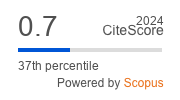Detection similarity and differences between Uropathogenic Escherichia coli isolated from recurrent urinary tract infections and bladder cancer patients
Keywords:
Urinary tract infection, Bladder cancer, Uropathogenic Escherichia coliAbstract
Background: Urinary tract infections (UTIs) and their complications such as Bladder cancer (Bl. C.) are a health growing problem worldwide. Objective: To shed light on this subject, present study was done to investigate relationship between recurrent urinary tract infection (RUTI) due to Escherichia coli (E. coli) and Bl. C.Type of study: Cross-sectional study. Methods: This study included 130 patients with RUTI, 50 patients with Bl. C. and 50 control of both sexes (aged 7-85 years) attending Al-Zahra Teaching Hospital in Al-Kut/Wassit governorate and Al-Harery Teaching Hospital of specialized surgeries/Baghdad. The patients were divided into two groups: the first group (n=130) included those who were suffering from recurrent UTI without bladder cancer and diagnosed clinically as having recurrent UTI. The second group(n=50) included those who had bladder cancer. One hundred and thirty morning midstream urine specimens were collected from recurrent urinary tract infection patients and 50 from healthy persons as a control and also 50 biopsy specimens collected from recurrent UTI with bladder cancer(after surgical operation to these patients) during beginning of October 2012 to end of March 2013. Results: Intracellular bacterial communities (ICBC) (namely Escherichia coli) was isolated from (68/130) 53% from patients with RUTI while (12/50) 24% isolated from patients with Bladder cancer In this study, other molecular technique called Repetitive extragenic palindromic (REP) were used for drawing the genetic map of bacteria to know the points of similarity and differences between isolated bacteria. A difference between bacteria in each group were found, but when comparing the genetic map of UPEC isolated from patients with Bl. C. with those isolated from patients with recurrent UTI high difference between them were seen. Conclusion: Detecting the intracellular bacterial communities (namely E. coli) in patients with recurrent UTI, with or without bladder cancer. Detecting similarity and difference in genetic map of UPEC isolated from RUTI and Bl. C. by Repetitive extragenic palindromic DNA (REP) technique, in which found high similarity between UPEC isolated from each group but difference from UPEC isolated from other group













